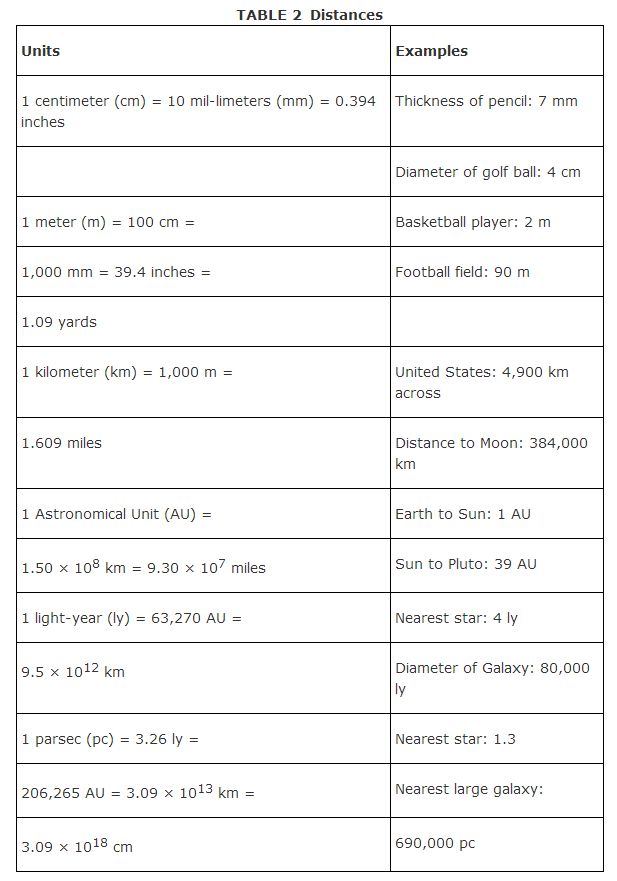Astronomers use a variety of methods to quantify the natural phenomena that they measure. Because the physical factors that are measured in astronomy are sometimes quite large or small, astronomers use scientific notation, or exponential numbers, to express these measurements. A number written in scientific notation is a number between 1 and 10 and multiplied by a power of 10 (see Table 1).

Astronomers measure factors such as size or distance using the metric system, a decimal system of weights and measures in which the kilogram (2.04 pounds), the meter (39.37 inches), and the liter (61.025 cubic inches) are the basic units of mass, length, and capacity, respectively. Names for the most common other units are formed by the addition of the following prefixes to these terms: kilo‐ (thousand), mega‐ (million), giga‐ (billion), centi‐ (1/100), milli‐ (1/1000), and micro (1/1,000,000). So, for example, a kilometer is a thousand meters, while a millimeter is one‐thousandth of a meter. Some astronomical measurements using the metric system are shown in Table 2.

Astronomers also utilize angles in measuring celestial objects, especially in quantifying their position and movement in the sky. An angle is formed by two lines that have the same endpoint. An angle is measured in degrees, from 0 to 180. The number of degrees indicates the size of the angle. A right angle has a measure of 90 degrees, while a complete circle would measure 360 degrees (see Figure 1). Angular measure is often given in terms of arc, which can be measured in minutes (60 minutes to a degree) or seconds (60 seconds to a minute).

Figure 1
Measuring angles. Notice that the Moon's angular diameter can be measured as 1/2 degree or 30 minutes of arc.